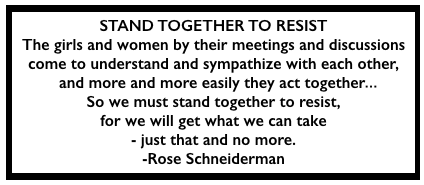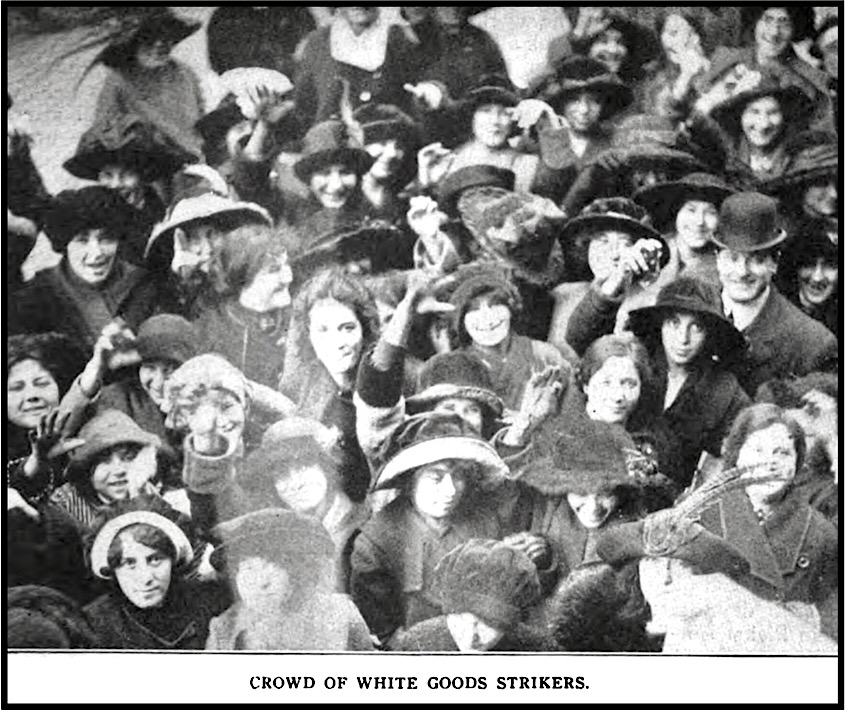 —————
—————
Hellraisers Journal – Tuesday February 4, 1913
New York, New York – The Garment Strike by Mary Marcy, Photos by Paul Thompson
From the International Socialist Review of February 1913:
THE NEW YORK GARMENT WORKERS
By MARY E. MARCYPhotographs by Paul Thompson, New York.
[Part II of III]
The thugs employed by the shop bosses have proved very energetic and reliable. They have worked early and late beating up strikers whenever possible, starting trouble and blaming it on the workers, while the police stood by (or took a hand) to see that nobody attacked or injured them.
During the first week in January the union officials conferred with the employers relative to a settlement of the strike, but the New York Call reports that all negotiations were broken off when the employers insisted upon a return of the strikers to the shops pending an investigation of the conditions in the trade by a special commission to be appointed for that purpose. The union officials declared that under no circumstances would “they order the men to return to work” pending an investigation or arbitration of their demands.
As the pickets began to suffer at the hands of the company guards, it was decided to take a lesson from the strikers at Lawrence, Mass., and chain picketing was employed for the first time in New York City.
Ten thousand pickets were asked to report each day, starting to work on the “Chain Picket Line” at 5 :00 o’clock in the morning, to pass constantly in a steady stream of pedestrians before the strikebound shops.
On the day of the inauguration of the Chain Picket plan, the unions held various meetings which were well attended by the strikers. Hugh Frayne urged a general strike in every branch of the needle and garment industries, promising the support of the A. F. of L. while Abe Cahan closed one meeting begging the strikers to be true to the American Federation of Labor. He urged them to carry an A. F. of L. card in one pocket and a Socialist party card in the other (that is to work for class organization on one side and craft division on the other.)
This is very different from the calls of the Industrialists, all of whom insist upon a CLASS UNION card on the industrial field and a Socialist party card to represent their class interests upon the political field.

